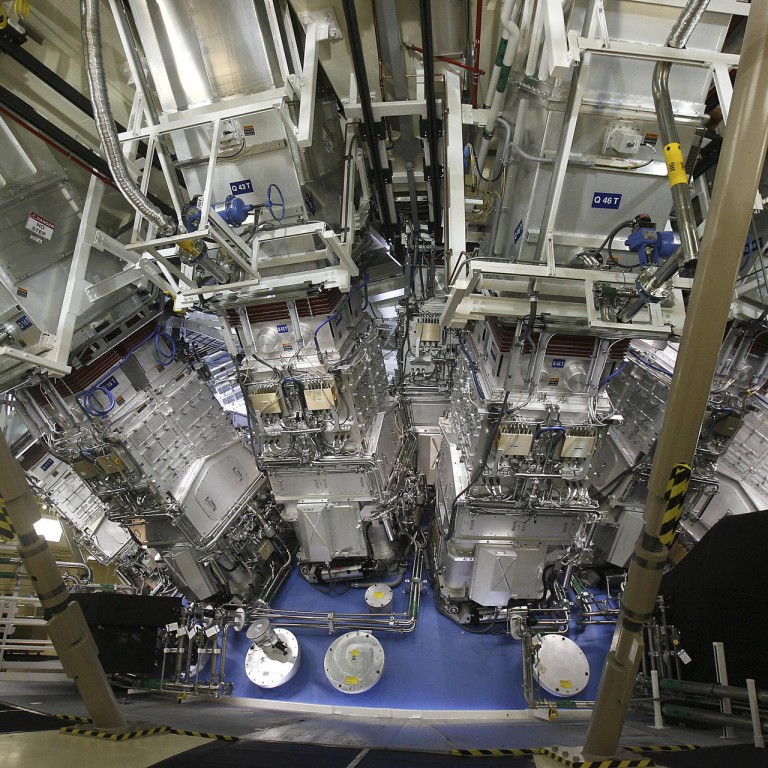
Milestone in nuclear fusion puts power of stars within our reach
A US laboratory is closer to the holy grail of self-sustaining nuclear energy but funding is proving to be a major obstacle
Perhaps the most significant recent science news was in a relatively subdued report from the BBC. The story noted that "researchers at a US lab have passed a crucial milestone on the way to their ultimate goal of achieving self-sustaining nuclear fusion".
Scientists at the National Ignition Facility (NIF) in California had focused laser beams to heat and compress a small pellet of hydrogen fuel and achieved a world first: more energy was released through the fusion reaction than was absorbed by the fuel.
Perhaps this brings us a step closer to harnessing the power of stars, where extreme temperatures and pressures cause atomic nuclei to combine forming larger elements and with slight mass loss accompanied by intense energy release. These fusion processes can start with hydrogen, helium and lithium that formed in the big bang, and evolve elements as heavy as iron - after which you need a supernova to unleash the forces needed to combine nuclei and supply energy to create heavy elements.
Here on earth, there is potential for deriving virtually unlimited clean energy from fusion power, without the severe downsides of nuclear power based on splitting atoms, such as radioactive waste and the chance of meltdowns. But the lower gravity makes even combining hydrogen nuclei extremely challenging. Hydrogen bombs developed in the early 1950s involved regular nuclear explosions to initiate fusion: hardly suitable for your neighbourhood power station.
Several projects are under way to discover ways to harness fusion power, which is akin to a holy grail of nuclear physics. "Fusion is a nearly ideal energy source - essentially inexhaustible, clean, safe and likely available to all nations. When proven practical, it will transform our energy future," Stewart Prager, director of the US Department of Energy's Princeton Plasma Physics Laboratory, wrote in a commentary on website last year.
Culham Centre for Fusion Energy, the UK's national laboratory for fusion research, announces careers in fusion with the slogan "Come to work to change the world". Work there focuses on initiating fusion within plasmas - extremely hot mixes of atomic nuclei stripped of their electrons - contained within magnetic fields. The devices used are tokamaks, devices shaped like giant doughnuts that were invented by Soviet scientists in the 1950s.
While Culham hosts the world's largest tokamak, an even grander one is being built in the south of France. Dubbed Iter - after Latin for "the way" - this is the largest scientific collaboration in the world. The reactor is 30 metres tall and, according to , the plasma will be contained by "giant electromagnets powerful enough to trap an aircraft carrier". By heating hydrogen atoms to more than 150 million degrees Celsius - 10 times the temperature required for fusion in the sun - researchers anticipate that they will achieve a net gain in energy.
Even so, Iter will be an experiment rather than a power station. And actual trials with plasma may be a decade away.
While tokamaks are receiving the most funding and attention, there may be other ways of generating fusion power. The National Ignition Facility's project is among these, with super-cooled hydrogen fuel that is suddenly heated by converging 192 beams from the world's most powerful laser, which arrive within 30 trillionths of a second of each other.
If fusion power proves viable, it could help space travel. Last month, reported on a small but ambitious US company, Princeton Satellite Systems, which has ideas such as a fusion rocket for Mars that would be smaller than a minivan.
It seems far-fetched given the size of facilities such as Iter and the National Ignition Facility. Yet the science does indicate the potential, given that weight for weight, fusion of hydrogen could generate up to 10 million times the energy of coal.
Steve Cowley, director of the Culham Centre for Fusion Energy, told that the main barrier to fusion power on earth is government funding. "For US$20 billion in cash," he said, "I could build you a working reactor."
As another indicator of stumbling blocks arising from human failings rather than pure science, Iter has encountered hold-ups, including a giant magnet that had to be scrapped after a worker left a towel that became compressed within a coil. And you have perhaps heard little of the milestone at the National Ignition Facility because researchers haven't been around to speak of it this month: they were laid off during the US government shutdown.

